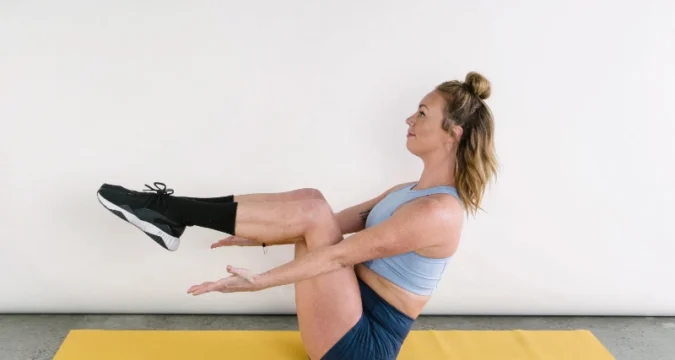
A strong core is essential for effective exercise and athletic performance. Every sport that requires the use of the entire body—from swimming and riding to baseball, golf, and tennis—requires core strength.
In addition to strengthening the core and providing support for the spine, working the abdominal and pelvic floor muscles improves stability, posture, and the effectiveness of all other types of exercise. Encouraging proper breathing while exercising is another benefit.
Muscle-Building Routines

Building a strong core is equally important as building one’s arms and legs if one wants total strength, power, and endurance. Your core muscles—which include your back, hips, and abdomen—are responsible for stabilizing your entire body. Better posture and injury avoidance are two other benefits.
Incorporating exercises like squats and deadlifts into your core training routine can help strengthen the abdominal muscles and stabilize your core while you work up a sweat. Sam Yo, a certified personal trainer at New York City’s Equinox Fitness, says, “Core-strengthening movements like the plank, reverse crunch, and side-plank are good examples.”
Back muscles called erector spinae, abdominal muscles called transverse abdominis and rectus abdominis (the area at the front of the stomach that most people think of as “abs”), and pelvic floor muscles are the emphasis of these workouts. On top of that, they’re going for your rear end. To do core exercises, you do not need weights.
Exercise for Strengthening the Core

For optimal stability and balance in any activity or in daily life, a strong core is essential. An improved core strengthens not just your movement patterns and posture, but it also reduces back pain.
A set of muscles called the core muscles maintains the spine. These muscles include the stomach, hip girdle, and paraspinal muscles. Improve your stability with the help of core stability exercises, which train your abdominal muscles to contract with greater force and precision.
You don’t need anything fancy—only your body weight or a stability ball or mat—to do these exercises. Maintaining core stability with a plank is an easy and effective workout. To start, bring your hands to meet your elbows and lower yourself to the floor while remaining on your stomach. Assuming a standing position with your legs elevated, tighten your abs to create a line connecting your crown to your toes. This exercise should be done ten times. When you start to feel stronger, you should up the ante on the sets and repetitions.
Methods for Building a Strong Core

You can build your core strength with any number of exercises. Plank, bird dog, and crunches are some that you may be familiar with.
Your core will become stronger with repeated practice of these and many other variations of core training exercises. Some of the muscles that make up your core are those in your lower back (erector spinae), pelvic floor, inner and outer thighs, and abdomen.
This is why it’s so important to incorporate a range of core training types into your routine; doing so will help you build strength throughout your body and give you stronger abs and other muscles. Running and climbing, which require a strong core, are exercises that fall under this category. Actually, a strong core can help you run farther and avoid injuries. The reason being, when your core is strong, the remainder of your body has a solid foundation to move around on.
Differing Levels of Core Stability

Some examples of a strong core include having six-pack abs and being able to maintain a plank for longer than your favorite TikTok video star. The core provides overall stability for your body. From regular tasks to athletic competitions, you’ll need it to succeed. People who complain of a “bad back” often really need to work on strengthening their core muscles.
Building a stronger core requires a combination of stability and strength training, says Kira Stokes, a NASM-certified trainer and founder of the fitness app Stokes Fit. Side bridges, bird dogs, and stir pots are among the additional core stability variations she recommends using in your practice.
To begin, assume a regular plank posture. With your left knee just under your shoulder, bring your hips up to a small angle. Before moving to the other side, keep your abs tight to avoid arching your lower back. Work each side for ten reps in three sets.